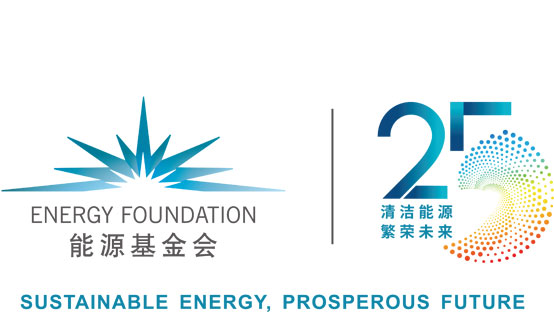The Chinese Energy Industry Needs to Embrace a Low-Carbon Revolution
Zou Ji, President, Energy Foundation China
China is now at a crucial juncture in its monumental transformation from the biggest emitter of greenhouse gases to a low-carbon economy. Its goal has been very clear since the Parties to the United Nations Framework Convention on Climate Change reached the Paris Agreement in 2015. But as it’s faced with a slowing economy and an unprecedented trade war amongst a multitude of challenges at home and from aboard, many have raised questions about the way forward. In this article, we seek to provide answers to some of them.
China remains one of the most fervent proponents of global efforts to promote clean energy and a comprehensive low-carbon transformation. It has made valuable contributions to the fight against climate change. In the energy sector, the country pushed for the elimination of outdated production capacity of traditional fossil fuel and vigorous development of renewable energy in order to raise efficiency and reduce emissions.
However, Chinese efforts in this area cannot be divorced from its basic national conditions. At present, China is still a developing country in many aspects. Her people remain poor on a per capital basis and rightfully demand further economic growth, industrialization, and urbanization to raise their living standards. According to official statistics, about 40 percent of China’s population is currently in rural areas. Among them, there is a sizable chunk living in poverty. This means that China’s manufacturing sector still needs to develop and its infrastructure will continue to expand. So China’s total energy consumption will still grow for the foreseeable future.
At the same time, certain conditions exist in China that allow the most populous country in the world to raise efficiency and get closer to objectives that can be achieved by a developed nation. In particular, it has the capability to innovate with regard to carbon emissions and trek out a new path of low-carbon development—peaking emissions early while achieving sustained economic growth.
China is helped by its active research and development of related science and technology. In recent years, clean and low-carbon technologies have seen rapid advances and huge drop in cost in the country.
To attain low-carbon development, active participation of the energy industry is a pre-requisite. It’s also the only way for the industry to move forward, which is currently engaged in a major structural adjustment.
For the past 40 years, the central mission of the Chinese government has been to build a modern and powerful economy as a mean to improve the welfare of its populace. With this in mind, the energy industry, as one of the most important areas in the national economy, could stimulate growth and improve people’s welfare by embracing its own low-carbon transformation in the spirit of the phoenix rising from ashes.
With technological innovation on our side, this is by no means a mission impossible. For example, we have seen the cost of renewable energy generation rapidly decline, energy efficiency improve, and energy storage technology mature. What the energy industry needs to do now is to commit to an acceleration of transformation by increasing the proportion of non-fossil energy, especially renewable energy within its total supply.
The transition to low-carbon development will no doubt have a huge and far-reaching impact on the energy industry with changes to the outlook of strategy and technology. Taking the electricity sector as an example, decarbonization requires comprehensive deployment of technologies in all three stages: primary sources, power generation, and final consumption.
China raised the concept of energy revolution as early as 2014, the goal is to achieve clean, sustainable, and safe usage of energy that can sustain human prosperity.
The low-carbon transformation is a national undertaking that contains many aspects. Rome wasn’t built in a day; the low-carbon transformation of the energy industry is also a long-term project. China faces many challenges. For example, there is still a lack of breakthroughs in cross-sector low-carbon technology.
With regard to supporting infrastructure, such as transmission and distribution facilities, energy storage devices, there is insufficient long-term planning. In addition, difficulties remain in the areas of energy market structure adjustment and capital investment etc.
At the same time, institutional reform needs to have clear directions and goals. If a reform fails to promote higher productivity, then it’s not a good reform.
The journey of a thousand miles begins with a single step, as the old Chinese saying goes. We must take immediate action, coupled with plans for the long-term. China should accelerate its market-oriented reform in the energy sector and continue to break up monopolies. The recent changes of the electricity market on the supply side are an excellent breakthrough point.
And all such endeavors should start with sensible designs at the top, followed by expansion through regional pilots. At the same time, their effectiveness must be evaluated so as to better integrate near, medium and long-term goals.
At present, low-carbon development has become the trend of the times on a global scale. In the United States, 17 States led by California have indicated that they will continue to fulfill their obligations under the Paris Agreement despite President Trump’s withdrawal announcement.
For China, there are valuable international experiences to be learned in the area of decarbonization. It is of paramount importance that we should look at the issue with a long-term perspective. And we must try to be forward-looking and courageous in our exploration. For example, California, as one of the global innovation centers, has held firm to a low-carbon future and set up its own ambitious goals. In terms of technological innovation, there are many international mechanisms for encouraging research and development. At the same time, there are also rich and mature experiences on carbon market operations and low-carbon technology development financing from around the world.
International cooperation on low-carbon transformation can and should be a multi-level effort, covering different fields. First, it is necessary to establish a low-carbon awareness from top down within the energy industry, so as to conform to the global trend and facilitate better international exchanges. There is a need for “brains”—think tanks, experts and scholars, to refine the experience and ideas of decarbonization for the industry. At the same time, government agencies need to make plans to support low-carbon transitions with favorable policies.
Second, the energy industry can conduct dialogues at different levels in the international arena through means such as study tours, academic exchanges, seminars, etc., to promote low-carbon awareness, ideas, and experiences, and to find cooperation opportunities.
Third, there must be a group of facilitators who are committed to promoting multilateral cooperation. Energy Foundation China is one such facilitator, looking for opportunities to assist international exchanges and cooperation in the fields of industry, finance, science and technology, and academia in order to promote China’s low-carbon transformation.
In general, we have at our disposal many methods and means to explore low-carbon transformation in the energy sector. However, the key here is to turn our gains from cooperation into concrete actions on a daily basis, such as designing of practical projects, strategic dialogues, joint policy research, joint technology research and development, joint investment and financing, and business model innovation. All of these will then create more opportunities for cooperation and make them truly effective.




